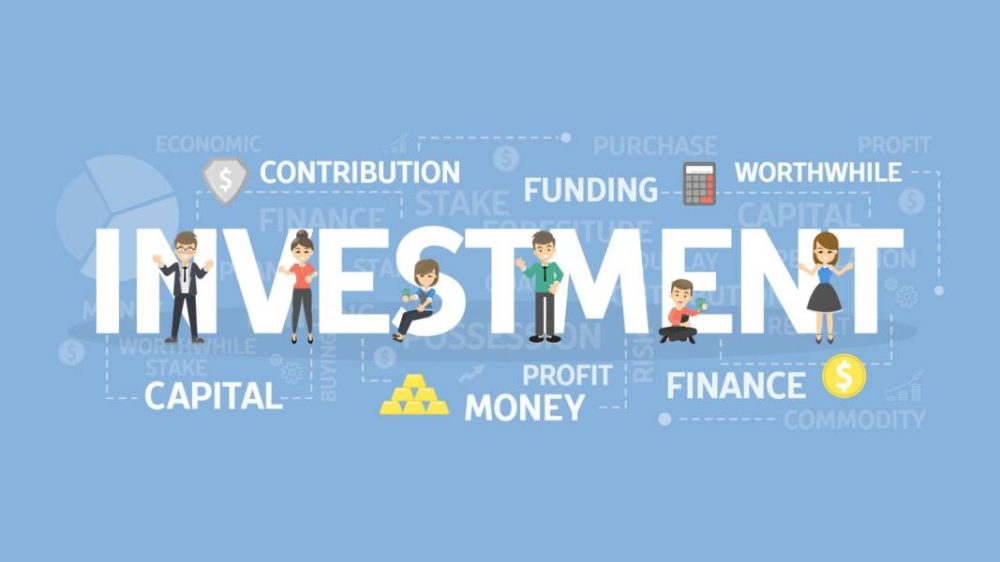The IT sector is the best sector to invest in with an average return on investment of 18.1%, while the consumer discretionary sector accounts for 15.3%. Can these sectors sustain their growth and offer a reliable path for long-term returns?

Investors seeking opportunities to maximise returns must navigate an increasingly dynamic economic landscape. While global events, technological advancements, and shifting consumer preferences continuously influence markets, certain sectors have proven resilient and rewarding.
According to recent data, the best sectors for investment currently include IT, consumer discretionary, healthcare, industrials, and financials.
The Consumer Discretionary sector has shown robust performance, with earnings forecasted to grow by 17% annually. The healthcare sector is poised for growth, with projections indicating that AI and machine learning could result in net savings of up to $360 billion in healthcare spending.
Here’s an in-depth look at each of these sectors, based on recent performance and projections.
10 best sectors to invest in 2025
Here is the list of the 10 best industries to invest in 2025:
- Information Technology (IT)
The IT sector consistently tops investment charts, largely due to the digital transformation that has reshaped industries. From cloud computing and cybersecurity to artificial intelligence (AI) and blockchain, technology continues to influence almost every business sector. A study by InvestinGoal.com revealed that the IT sector offered an impressive average annual return of 18.1% from 2010 to 2022. Despite occasional downturns, such as the 28.2% dip in 2013, it has also achieved remarkable highs—50.3% in 2019.
Notable performers within the sector have included Advanced Micro Devices (AMD), Lam Research, and KLA, which reported growths of 153%, 117%, and 100%, respectively, in recent years. The widespread adoption of AI-driven systems further enhances the sector’s appeal, as these systems are reshaping data analysis, predictive modelling, and market trend forecasting.
Investors may find robust opportunities within this sector, particularly as demand for cloud services, data security, and automation grows. Despite occasional volatility, the long-term outlook for IT remains positive, bolstered by the digital transformation sweeping through industries worldwide.
- Consumer Discretionary
With an average annual return of 15.3%, the consumer discretionary sector is highly appealing to investors. This sector includes companies that produce goods and services considered non-essential, such as luxury goods, entertainment, and travel. As the economy stabilises and consumer confidence rises, companies in this sector stand to gain significantly.
However, consumer discretionary is also subject to economic cycles, experiencing a notable -37% decline in 2022. Yet, its high upside of 43.1% in 2013 shows that during favourable economic conditions, this sector can yield substantial returns.
High performers have included Tesla, Amazon, and Nike, all of which have capitalised on evolving consumer preferences. Despite economic uncertainties, consumer spending on discretionary items often rebounds, particularly during periods of economic growth. The sector remains sensitive to economic cycles, but it tends to excel during times of consumer optimism and rising disposable incomes.
- Healthcare
The healthcare sector has maintained a strong average return of 13.4%, driven by an ageing global population and the increasing demand for advanced medical solutions. This sector includes companies providing medical services, manufacturing medical devices, producing pharmaceuticals, and offering health insurance.
Noteworthy stocks such as Thermo Fisher Scientific, UnitedHealth Group, and Johnson & Johnson have experienced considerable growth due to their continued innovation and the essential nature of healthcare services. Additionally, the sector has shown resilience during economic downturns, as healthcare remains a priority even amid financial strain. The industry is also seeing growth in telemedicine and biotechnology, opening further opportunities for investors.
- Industrials
The industrial sector, with an average return of 13.2%, encompasses companies involved in manufacturing, resource extraction, and infrastructure development. This sector benefits from governmental infrastructure initiatives and ongoing investments in renewable energy projects. Companies in this sector produce capital goods essential for construction, machinery, and transportation, positioning them as vital players in global supply chains.
Despite fluctuations, industrials have shown resilience, with a maximum return of 40.7% in previous high-performance years. Leading industrial companies, such as Honeywell, Caterpillar, and Siemens, continue to see substantial growth, particularly with the push towards automation and sustainable industrial practices. The shift towards renewable energy and green technology is creating new growth avenues within the sector, making it a viable investment option for long-term investors seeking stable returns.
- Financials
The financial sector, which includes banks, investment firms, insurance companies, and real estate providers, has yielded an average return of 12.3%. Financial companies benefit from rising interest rates, increased lending activity, and demand for wealth management services.
Notable performers such as JPMorgan Chase, Goldman Sachs, and Berkshire Hathaway have successfully navigated market challenges through diversification and innovative financial solutions. Although this sector is sensitive to interest rate changes and regulatory policies, it offers long-term growth potential, particularly as digital banking and fintech continue to transform the financial landscape.
- Real Estate
The real estate sector remains a dependable investment, with an average return of 12.2%. This sector includes residential, commercial, and industrial real estate, along with real estate investment trusts (REITs) that provide a low-barrier entry into property markets. Real estate has traditionally been a hedge against inflation, as property values and rental income tend to rise with increasing prices.
Popular investment options in this sector include REITs such as American Tower Corporation and Prologis, which have seen steady growth due to their focus on essential infrastructure like data centres and logistics. With the ongoing trend of remote work, demand for housing and commercial spaces is expected to shift, presenting diverse investment opportunities.
- Consumer Staples
The consumer staples sector consists of companies that produce essential goods like food, beverages, and household products. With an average return of 11.9%, consumer staples offer stability and consistent returns, especially during economic downturns when consumers prioritise necessities over discretionary spending.
Major players such as Procter & Gamble, Nestlé, and Coca-Cola have a proven track record of weathering economic volatility, making this sector attractive for conservative investors. As inflationary pressures rise, companies in this sector can often pass increased costs to consumers, helping maintain profitability.
- Utilities
Utilities represent another stable investment option, yielding an average return of 11%. This sector covers essential services like electricity, water, and natural gas, which remain in constant demand. Utilities are known for providing steady dividends and reliable returns, making them suitable for income-focused investors.
Leading companies such as Duke Energy and National Grid benefit from the consistent demand for energy and the gradual shift toward renewable sources. As governments implement policies to reduce carbon emissions, utility companies with renewable portfolios are likely to see long-term growth, offering a sustainable investment pathway.
- Energy
The energy sector has shown an average return of 10.2%, with peaks driven by fluctuating oil prices. Despite being among the lower-ranked sectors in terms of average return, it offers substantial growth during market rallies. For instance, the energy sector saw a record 65.7% return in 2022.
With a global shift towards renewables, companies focused on cleaner energy sources, like NextEra Energy and Enphase Energy, are attracting investor interest. As the world transitions away from fossil fuels, renewable energy companies may offer some of the best long-term growth opportunities within the energy sector.
- Communication Services
At the bottom of the list, the communication services sector has shown an average return of 8.4%. This sector includes traditional media, telecom providers, and internet-based companies, such as Netflix, AT&T, and Meta (formerly Facebook).
Despite a low average return, specific segments within communication services, particularly those focused on digital transformation and internet-based services, have seen growth. The challenge lies in balancing growth from digital innovation with declining revenues in traditional media.
Things to consider before stock sectors to buy
When considering which stock sectors to invest in, it is essential to conduct thorough research and analysis. Below are some key factors to consider:
- Economic Cycle
The performance of different sectors can vary greatly depending on the phase of the economic cycle. For instance, cyclical sectors such as consumer discretionary and industrials tend to perform well during economic expansions, whereas defensive sectors like healthcare and utilities are more resilient during economic downturns.
- Sector Fundamentals
Evaluate the fundamental health of the sector, including growth potential, profit margins, and competitive landscape. Understanding the underlying trends, such as technological advancements, demographic shifts, or regulatory changes, can provide insight into long-term prospects.
- Valuation Metrics
Examine valuation indicators, such as the price-to-earnings (P/E) ratio, price-to-book (P/B) ratio, and dividend yield, to assess whether a sector is overpriced or undervalued compared to its historical norms or peers.
- Interest Rate Environment
Changes can heavily influence sectors such as financials and real estate in interest rates. Rising rates may benefit banks but could negatively impact utilities and other high-debt sectors.
- Geopolitical Risks
Consider how global political tensions, trade policies, and economic sanctions might impact certain sectors, especially those heavily involved in international markets, such as energy and defence.
- Technological Innovations
Sectors that rely on technological advancements, like information technology and healthcare, can be volatile but may offer substantial growth potential. Staying updated with innovation trends and breakthroughs can help inform investment choices.
- Diversification
Ensure a balanced approach to diversify investments across multiple sectors to reduce risk exposure. A diversified portfolio can mitigate the impact of underperformance in any single sector.
- Environmental, Social, and Governance (ESG) Considerations
The focus on sustainability and ethical investment practices is growing. Assessing a sector’s compliance with ESG criteria can align investments with values and potentially provide long-term financial stability.
Final thoughts
Choosing the right sector is crucial for investors looking to achieve stable, high returns. The IT sector leads the pack, driven by continuous advancements in AI, software development, and cybersecurity. Consumer discretionary and healthcare also offer robust returns, supported by shifting consumer preferences and demographic trends.
While certain sectors like communication services and energy have yielded lower average returns, they still offer potential for growth, particularly for investors willing to take on more risk. With trends such as renewable energy, ESG, and AI reshaping industries, investors have a wealth of opportunities to explore. Careful consideration of each sector’s unique risks and advantages can help investors maximise their returns in a rapidly evolving market.
Key takeaways
- The IT sector remains the top choice for investors, with an impressive 18.1% average return driven by digital transformation, AI, and cybersecurity growth.
- Despite economic cycles, the consumer discretionary sector, averaging 15.3%, benefits from rising consumer confidence, especially in luxury and entertainment.
- Averaging 13.4% in returns, the healthcare sector remains strong due to global demographic shifts, with significant growth in telemedicine and biotechnology.
- Industrial investments, at a 13.2% average, are driven by infrastructure initiatives, renewable energy, and sustainable practices.
- Yielding 12.3%, the financial sector profits from digital banking innovations, rising interest rates, and a growing wealth management demand.
- Real estate, consumer staples, and utilities offer stability, while sectors like energy and communication services present growth potential for higher-risk investors.
Himani Verma is a seasoned content writer and SEO expert, with experience in digital media. She has held various senior writing positions at enterprises like CloudTDMS (Synthetic Data Factory), Barrownz Group, and ATZA. Himani has also been Editorial Writer at Hindustan Time, a leading Indian English language news platform. She excels in content creation, proofreading, and editing, ensuring that every piece is polished and impactful. Her expertise in crafting SEO-friendly content for multiple verticals of businesses, including technology, healthcare, finance, sports, innovation, and more.




































